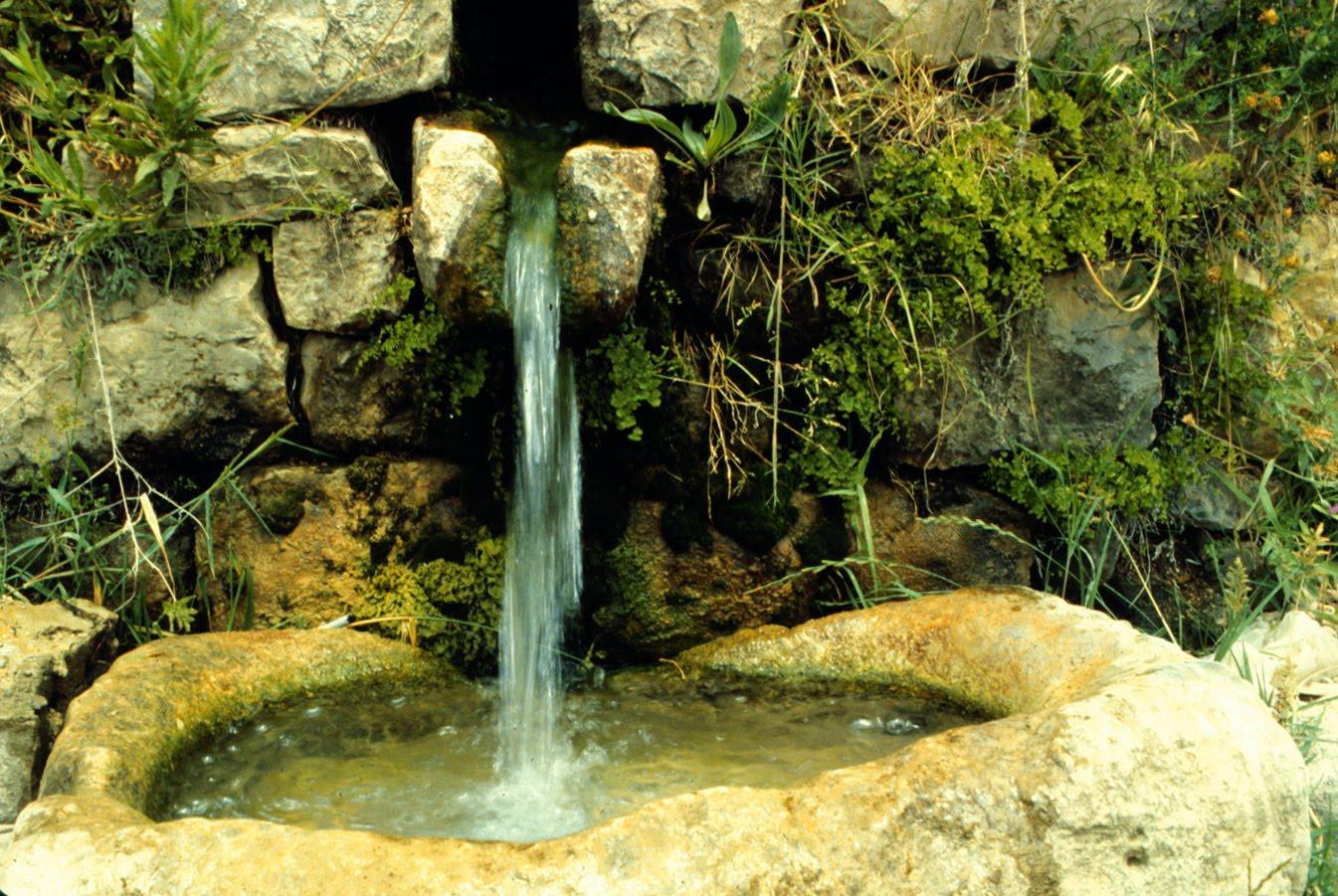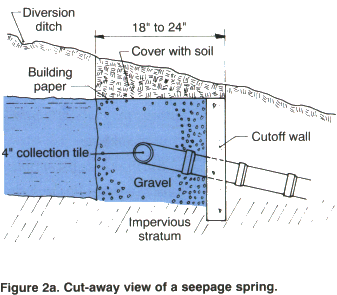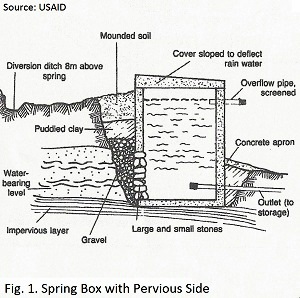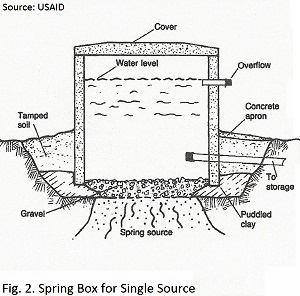44++ How to pipe water out of a spring naturally ideas
Home » Background » 44++ How to pipe water out of a spring naturally ideasYour How to pipe water out of a spring naturally images are ready. How to pipe water out of a spring naturally are a topic that is being searched for and liked by netizens today. You can Download the How to pipe water out of a spring naturally files here. Download all royalty-free images.
If you’re looking for how to pipe water out of a spring naturally images information related to the how to pipe water out of a spring naturally interest, you have pay a visit to the right blog. Our website frequently gives you suggestions for downloading the maximum quality video and picture content, please kindly hunt and find more enlightening video content and graphics that match your interests.
How To Pipe Water Out Of A Spring Naturally. Where solid or clay layers block the underground flow of water it. Dig a trench on the uphill slant of your property and continue to wrap the trench around your home. Places where the water leaves the soil and gets to the surface to run off will help. Without it the supply line would empty to some degree and when the pump turns on it will be pumping air instead of water.
 Feb 9 2019 Japanese Shallow Bachi Are Handcarved From Silver Grey Granite With Polished In 2020 Japanese Garden Design Japanese Water Gardens Japanese Water Feature From id.pinterest.com
Feb 9 2019 Japanese Shallow Bachi Are Handcarved From Silver Grey Granite With Polished In 2020 Japanese Garden Design Japanese Water Gardens Japanese Water Feature From id.pinterest.com
Water getting into the soil causes springs. 2 GPM Dole valve on the pump small pressure tank and pressure switch at the pump. Clean clear water flows from the collection pipes to the storage or collection box. As long as its not your driveway or sidewalk. Dig a diversion ditch about a yard above the eye of the spring that slopes away on either side to carry away excess rainwater that may pollute the spring with run off mud and plant matter. Step 3 Find the spot where water congregates frequently and dig a pit for the water.
Water must be able to flow freely without pressure towards the spring box so it does not backup behind the spring headwall.
Use the float switch to simply open or close a sprinkler type solenoid valve at the contact tank. Where solid or clay layers block the underground flow of water it. There is less fuss and monkeying around with this but no fun in a Minnesota winter. As you bury your pipe remember to slope it downhill so water will run away from the spring. A spring may be defined as a place where a na-tural outflow of groundwater occurs. Box inlet must be be-low the elevation of the collector tile.
 Source: h2osolutions.com
Source: h2osolutions.com
Placing rocks or gravel around and under the channeling source will help prevent sediment from getting through and help prevent the pipe from. You want to eliminate depressions and add drainage. Spring water is usually fed from a sand or gravel water-bearing soil formation called an aquifer or a water flow through fissured rock. In summer I hook a garden hose to the bottom a d fill the pipe with water. Step 3 Find the spot where water congregates frequently and dig a pit for the water.
 Source: pinterest.com
Source: pinterest.com
Cover The spring with dry dirt. Step 3 Find the spot where water congregates frequently and dig a pit for the water. We then took three PCV water pipe about 1 12 inch diameter and drilled several holes into each pipe and connected them into a larger pipe which collected the water from all three. The ditch can be lined with stones to stabilize it. Water getting into the soil causes springs.
 Source: pinterest.com
Source: pinterest.com
Generally the trenches should be 1 meter below the water level. Remove potential sources of contamination and divert surface water away from spring box or collec-tion area. The ditch can be lined with stones to stabilize it. If the spring is in the side of a hill dig into the hill aways and you may find a bolder vein to use. Without it the supply line would empty to some degree and when the pump turns on it will be pumping air instead of water.
 Source: youtube.com
Source: youtube.com
Spring water is usually fed from a sand or gravel water-bearing soil formation called an aquifer or a water flow through fissured rock. 18 per foot drop is sufficient however I increased that to 14 per foot as I figured that would get me somewhere between an 18 a 14 per foot. The bottom of the trench should be set to the depth you plan to take the water out of the spring. Place the spring box in a recessed area in the ground below the elevation of the collection system. For spring flows that cover a wide area.
 Source: offthegridnews.com
Source: offthegridnews.com
Places where the water leaves the soil and gets to the surface to run off will help. If the spring is in the side of a hill dig into the hill aways and you may find a bolder vein to use. The bottom of the trench should be set to the depth you plan to take the water out of the spring. Cover the spring with black plastic to make sure the surface water doesnt flow into the spring. We then took three PCV water pipe about 1 12 inch diameter and drilled several holes into each pipe and connected them into a larger pipe which collected the water from all three.
 Source: pinterest.com
Source: pinterest.com
See Figure 3 for an example of a spring box with collection pipes. If it reaches any depression that will accelerate sinking into the soil. A working foot valve keeps the supply line from the Spring constantly full of water ie not allowing it to drain back down the pipe. Water will flow downhill but also sink into the soil. Remove potential sources of contamination and divert surface water away from spring box or collec-tion area.
 Source: pinterest.com
Source: pinterest.com
There is less fuss and monkeying around with this but no fun in a Minnesota winter. Watch for water seeping back into the area if this happens then there is an abundance of water in the area. Placing rocks or gravel around and under the channeling source will help prevent sediment from getting through and help prevent the pipe from. Step 3 Find the spot where water congregates frequently and dig a pit for the water. If it reaches any depression that will accelerate sinking into the soil.

If the spring is in the side of a hill dig into the hill aways and you may find a bolder vein to use. This situation requires the pump to be manually primed again before water can flow. Solution for me is to blow air into the pipe form the bottom so as to fill the pipe then the water coming down will take the air out of the totally empty pipe. Box inlet must be be-low the elevation of the collector tile. Attach the backwash pipe overflow pipe and outlet pipe to outside of cutoff wall.
 Source: youtube.com
Source: youtube.com
A spring may be defined as a place where a na-tural outflow of groundwater occurs. Solution for me is to blow air into the pipe form the bottom so as to fill the pipe then the water coming down will take the air out of the totally empty pipe. Do this in winter. Attach the backwash pipe overflow pipe and outlet pipe to outside of cutoff wall. Be sure to dig deeply enough to get a clean avenue to place a channeling source.
 Source: pinterest.com
Source: pinterest.com
The ditch can be lined with stones to stabilize it. Locate and examine underground water pipes wells and holding tanks. Watch for water seeping back into the area if this happens then there is an abundance of water in the area. 18 per foot drop is sufficient however I increased that to 14 per foot as I figured that would get me somewhere between an 18 a 14 per foot. Without it the supply line would empty to some degree and when the pump turns on it will be pumping air instead of water.
 Source: pinterest.com
Source: pinterest.com
Pumping from the spring we can do this with out telemetry. A working foot valve keeps the supply line from the Spring constantly full of water ie not allowing it to drain back down the pipe. Without it the supply line would empty to some degree and when the pump turns on it will be pumping air instead of water. Dig a trench on the uphill slant of your property and continue to wrap the trench around your home. Be sure to dig deeply enough to get a clean avenue to place a channeling source.
 Source: pinterest.com
Source: pinterest.com
How do spring water supply systems typically work to deliver water to a building. Do this in winter. For spring flows that cover a wide area. Generally the trenches should be 1 meter below the water level. Where solid or clay layers block the underground flow of water it.
 Source: en.hesperian.org
Source: en.hesperian.org
Do this in winter. Solution for me is to blow air into the pipe form the bottom so as to fill the pipe then the water coming down will take the air out of the totally empty pipe. As you trench between the spring and a support post at the trough leave a small amount of earth unexcavated to hold the water in the spring. If it reaches any depression that will accelerate sinking into the soil. If the spring is in the side of a hill dig into the hill aways and you may find a bolder vein to use.
 Source: instructables.com
Source: instructables.com
In summer I hook a garden hose to the bottom a d fill the pipe with water. This situation requires the pump to be manually primed again before water can flow. Cover The spring with dry dirt. Water getting into the soil causes springs. Placing rocks or gravel around and under the channeling source will help prevent sediment from getting through and help prevent the pipe from.
 Source: clean-water-for-laymen.com
Source: clean-water-for-laymen.com
18 per foot drop is sufficient however I increased that to 14 per foot as I figured that would get me somewhere between an 18 a 14 per foot. This situation requires the pump to be manually primed again before water can flow. There is less fuss and monkeying around with this but no fun in a Minnesota winter. As you bury your pipe remember to slope it downhill so water will run away from the spring. Dig a trench on the uphill slant of your property and continue to wrap the trench around your home.
 Source: youtube.com
Source: youtube.com
A working foot valve keeps the supply line from the Spring constantly full of water ie not allowing it to drain back down the pipe. For spring flows that cover a wide area. Pumping from the spring we can do this with out telemetry. Spring water is usually fed from a sand or gravel water-bearing soil formation called an aquifer or a water flow through fissured rock. Remove the standing water with a shovel and dig a few inches into the ground.
 Source: clean-water-for-laymen.com
Source: clean-water-for-laymen.com
Water will flow downhill but also sink into the soil. A working foot valve keeps the supply line from the Spring constantly full of water ie not allowing it to drain back down the pipe. Install a pipe low in the collecting wall to direct the water from the interception reservoir to a concrete or plastic spring box. A spring may be defined as a place where a na-tural outflow of groundwater occurs. Where solid or clay layers block the underground flow of water it.
 Source: pinterest.com
Source: pinterest.com
The trench will take the water around the home and flow past the foundation instead of through it. A spring may be defined as a place where a na-tural outflow of groundwater occurs. Solution for me is to blow air into the pipe form the bottom so as to fill the pipe then the water coming down will take the air out of the totally empty pipe. A minimum depth of 2 feet will help prevent future damage from cattle and wildlife traffic. Without it the supply line would empty to some degree and when the pump turns on it will be pumping air instead of water.
This site is an open community for users to do sharing their favorite wallpapers on the internet, all images or pictures in this website are for personal wallpaper use only, it is stricly prohibited to use this wallpaper for commercial purposes, if you are the author and find this image is shared without your permission, please kindly raise a DMCA report to Us.
If you find this site serviceableness, please support us by sharing this posts to your favorite social media accounts like Facebook, Instagram and so on or you can also save this blog page with the title how to pipe water out of a spring naturally by using Ctrl + D for devices a laptop with a Windows operating system or Command + D for laptops with an Apple operating system. If you use a smartphone, you can also use the drawer menu of the browser you are using. Whether it’s a Windows, Mac, iOS or Android operating system, you will still be able to bookmark this website.